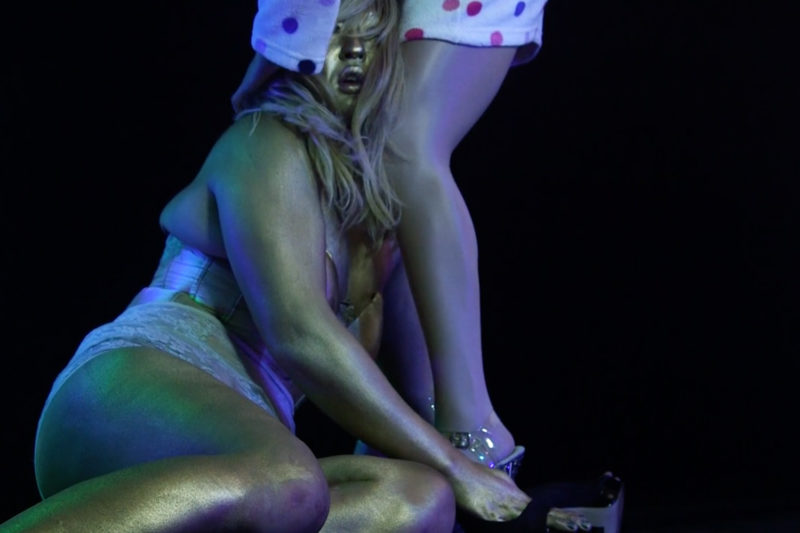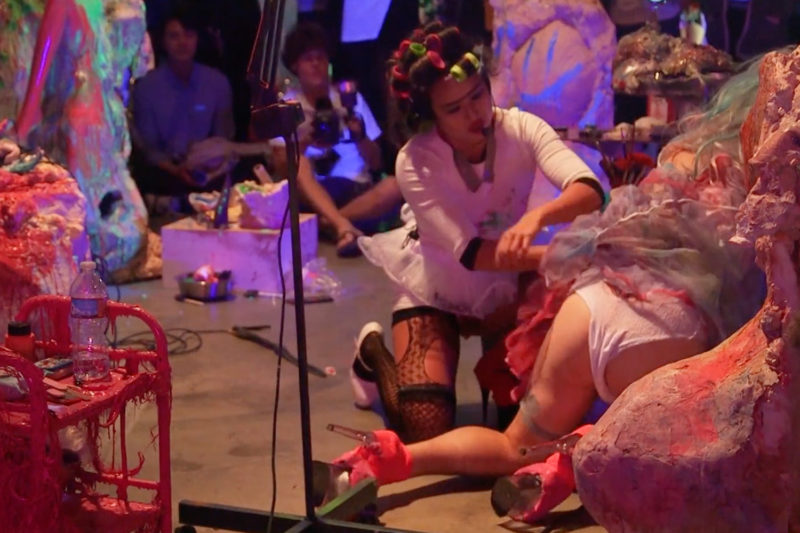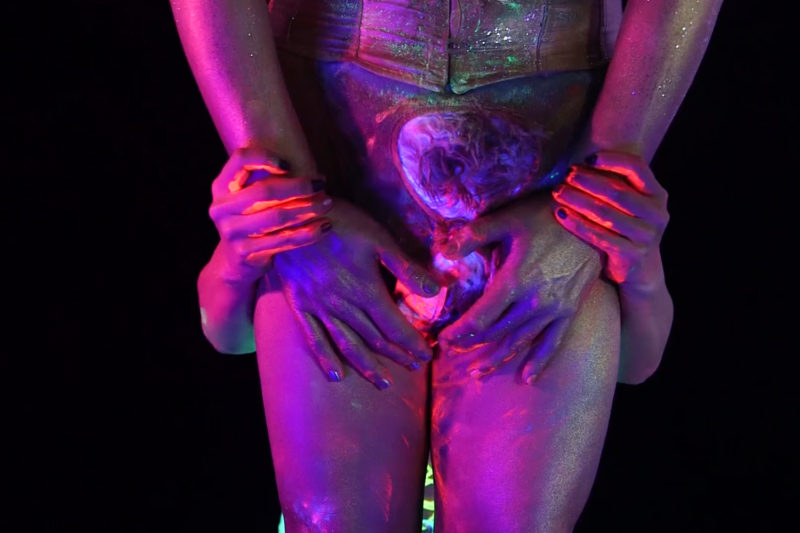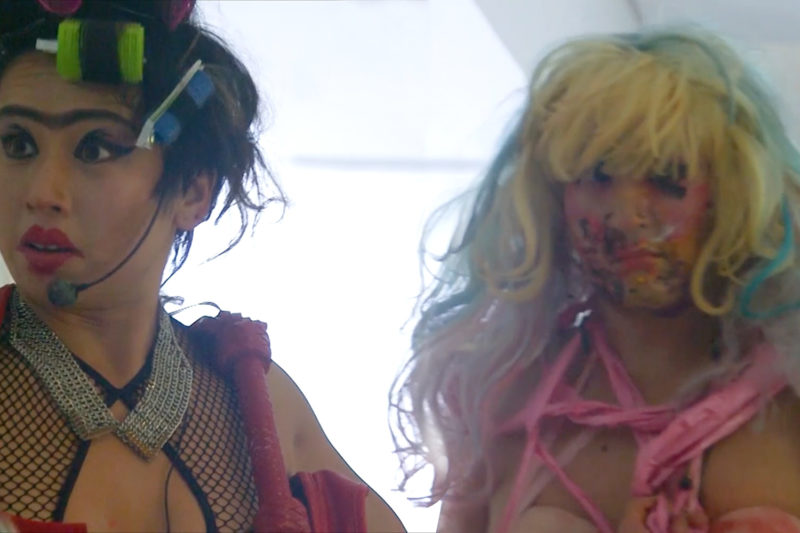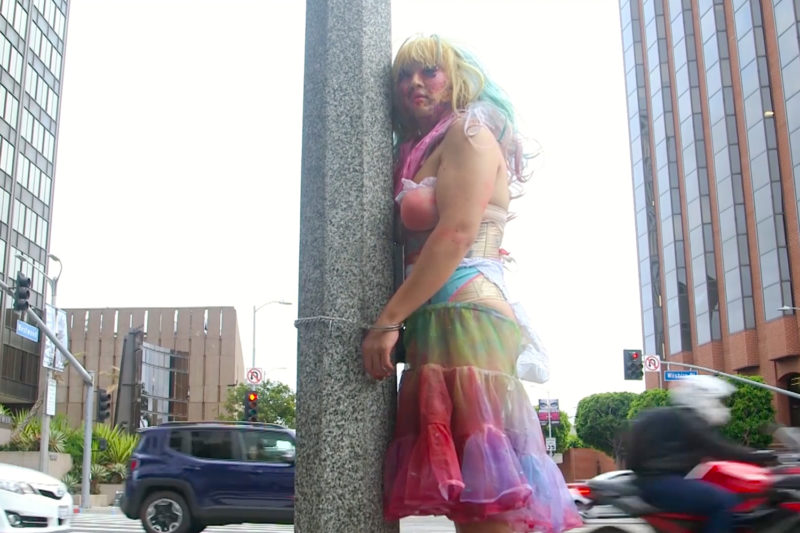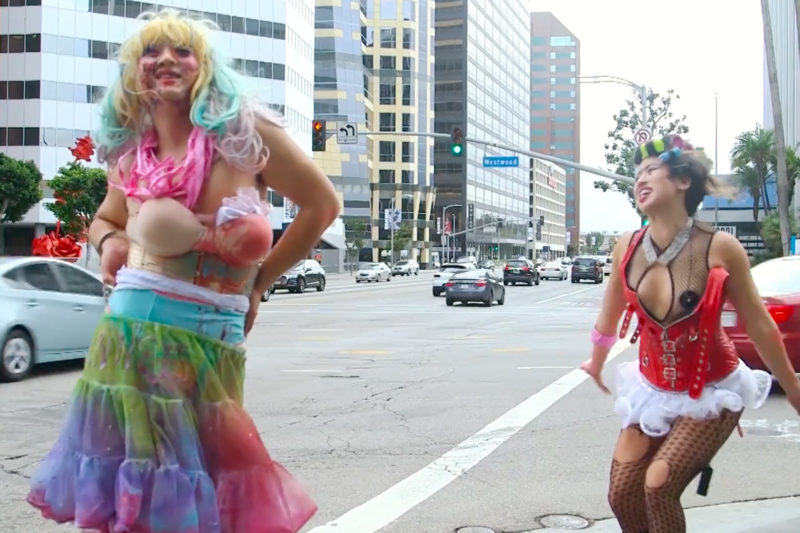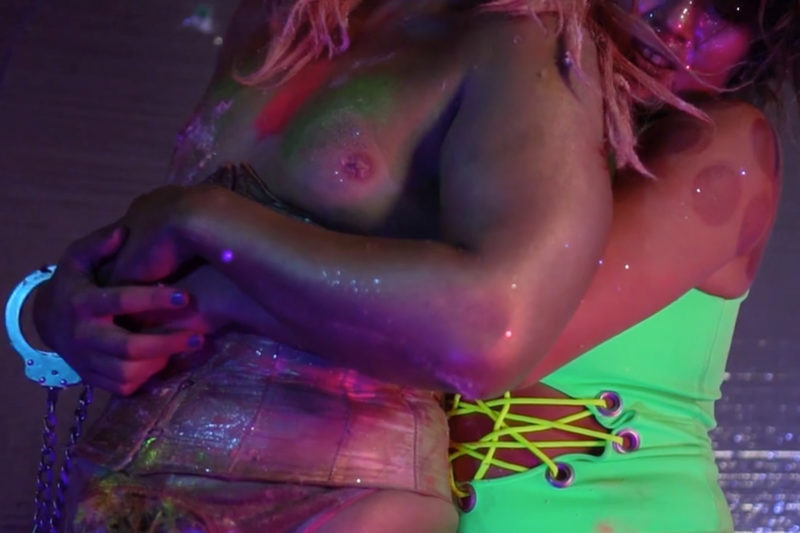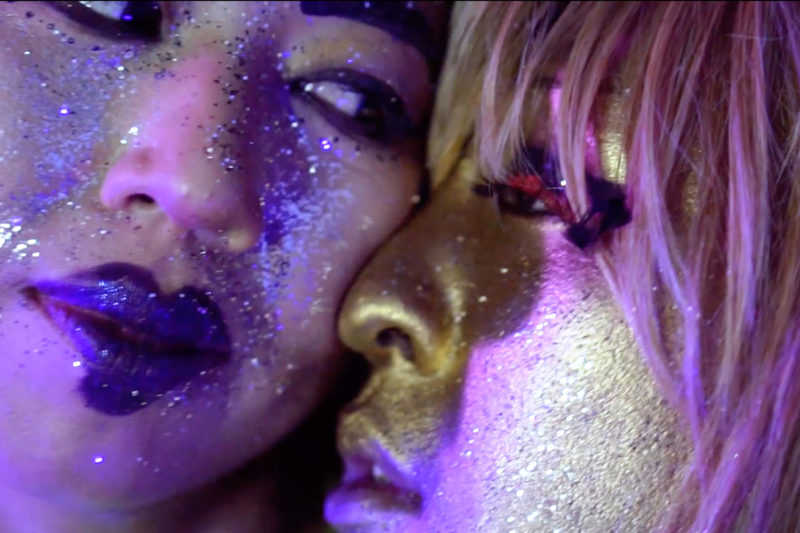Where I am My Own Other, Where My Mother is Me, collaboration w/Young Joon Kwak, 2017. Duration: 15 minutes, 3 seconds.
Videography: Abigail Collins, Jacinto Astiazarán; Sounds: Jeepneys & Whiteboy Scream, Corazon Del Sol & Barbara T. Smith, Marvin Astorga; [Dog Rock] sculpture: Corazon Del Sol. Contains footage from Mutant Salon’s Festival De Las Muertas (2016), Hammer Museum.
Young Joon Kwak + Kim Ye
Where I Am My Own Other, Where My Mother Is Me
by David Evans Frantz
A collaboration between artists Young Joon Kwak and Kim Ye, the video Where I Am My Own Other, Where My Mother Is Me (2017) complicates the tension between the psychological interior and exterior, performative action and documentation, fantasy and trauma, and the narrativization of gender transition. The video oscillates between footage of a performance the duo presented late last year and lushly seductive, dream-like breaks that recreate the actions performed in the prior presentation.
In the performance Kim, whose history as a professional dominatrix involves fulfilling individual fantasies through role-play scenarios, embodied a Mommy to Young, who took on the persona of her young daughter, through much of the performance embodying an infant (I will call her Baby). Part of a performance festival organized by Young’s collaborative project Mutant Salon at the Hammer Museum, in the performance Mommy berates, torments, pokes and prods, and humiliates Baby, what can be described as perhaps a hardcore Mommy Dearest-style tough love. Mommy teaches Baby to wear makeup; Baby wears high heels; Mommy instructs Baby on how to use sanitary pads; Mommy forces Baby to serve and eat cake (chastising her for eating too much and becoming fat); Mommy instructs Baby on how to work a pole and wave like a pageant queen. Tapping into the clichéd and damaging conceptions of femininity and womanhood, the give and take between Mommy and Baby’s dom/sub positionality, the hallmarks of role-play, complicate distinctions between trauma and fantasy, and gender roles and expectations.
Over the two hour duration of the performance, Mommy leads Baby through various spaces of the museum while interacting with visitors, beginning in the darkened space of Mutant Salon’s dizzying installation but progressing onto the courtyard stage, down through the Museum’s corporate marble lobby, and eventually out onto the sidewalk in Westwood along Wilshire Boulevard. The documentation of the performance is at times rough as the cameraperson negotiates the spaces of action, spectators, and the move from location to location, registering the progressive transition from interior space to an increasingly harsh light of the street. At the video’s conclusion, Baby is covered in makeup and cake waving at cars as they pass by and spectators pass in and out of the camera’s frame.
Responding to the original performance, Kwak and Ye’s video weaves the original footage with vignettes shot in the studio reenacting scenarios of the prior iteration often as close-up presenting the body in fragmented parts. These sequences are dreamy, seductive, and sensual—a kaleidoscope presentation of messy corporeality and plasticized materiality in stunning fluorescents (characteristic of other projects by Young). These perhaps introspective scenes might be best characterized as a visualization of Baby’s sub-space, the internalized psychological otherwhere of the submissive partner in a dom/sub role-play. Where the documentary footage is palpably past (this already occurred), the added sequences are notably of another temporality, perhaps not future but certainly somewhere other, possibly of undetermined interiority. At times, audio-recordings from the prior performance are presented over the newly shot sequences, a disjunctive meeting that upends the apprehension of linear time. These sequences are at times slow and glutinous, while at other moments are fast and frenetic, and often focus fetishistically on a particular object from the prior performance: heels, cake, handcuffs. While these segments reiterate the mother-daughter relationship previously established, the tone is subtly different. In one instance, slow pans over Ye’s face showing her wincing are intercut with her harshly reprimanding Baby who is handcuffed to a street light pole, pointing to the oscillation of multiple affects between mother and daughter engendered by the performance and video.
Through its layering of different audio and visual recordings, Where I Am My Own Other, Where My Mother Is Me blurs distinctions between the event, its documentation, and its reception both by the viewer and within the participant. In its reiteration of a mother-daughter script through the lens of sub/dom role-play, the performance also proposes alternate genealogies for genderfuckery and transness within a queer and feminist lens. As Kwak explained, the intention of the performance was to be a two-hour initiation by Ye into the process (including the perils and possibilities) of becoming a woman. As LGBT identity categories have become increasingly fixed and part of an increasing liberal order of commodity capitalism, Kwak and Ye’s collaboration ruminates on the messy relations between gender performance and temporality of performance through documentation.

